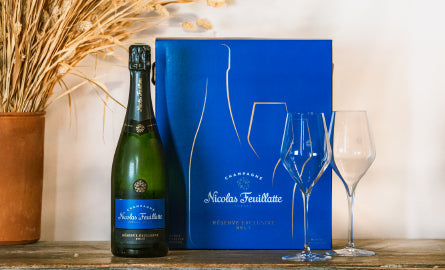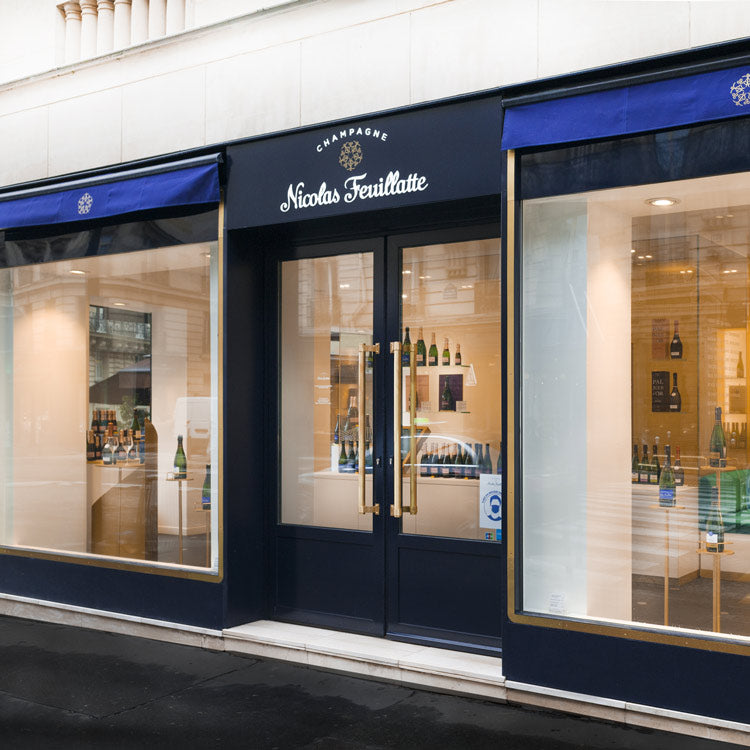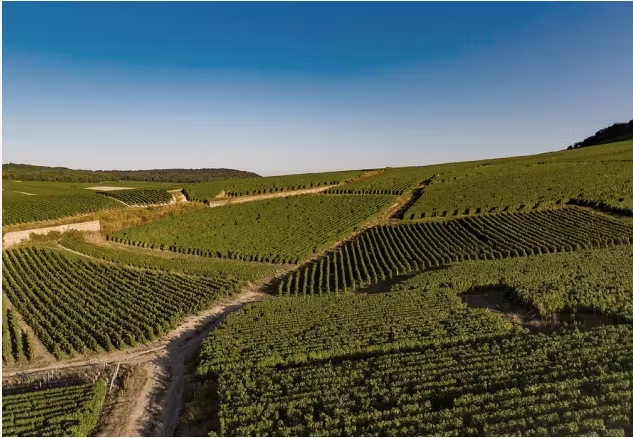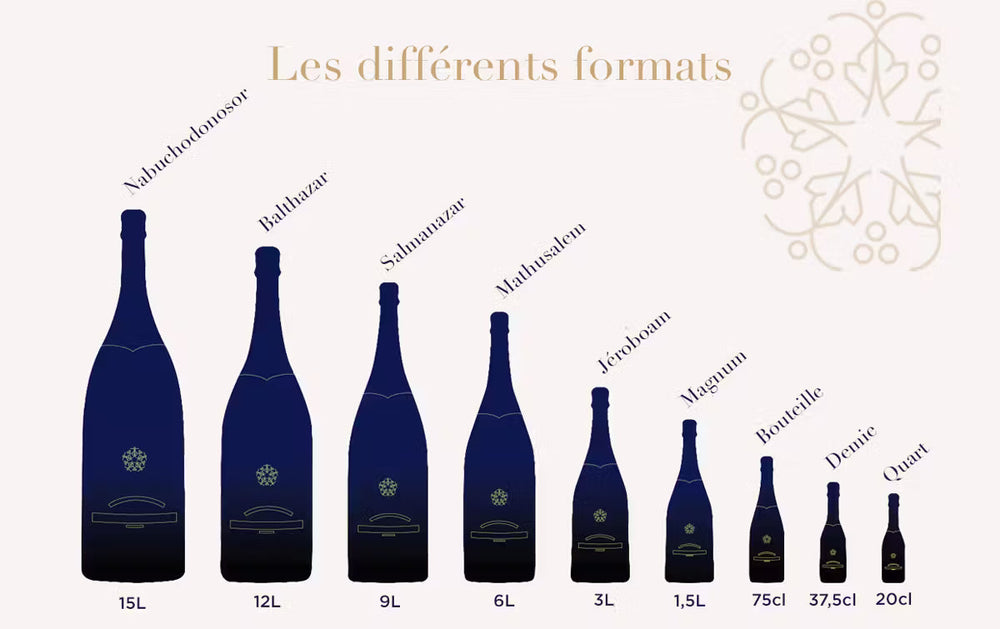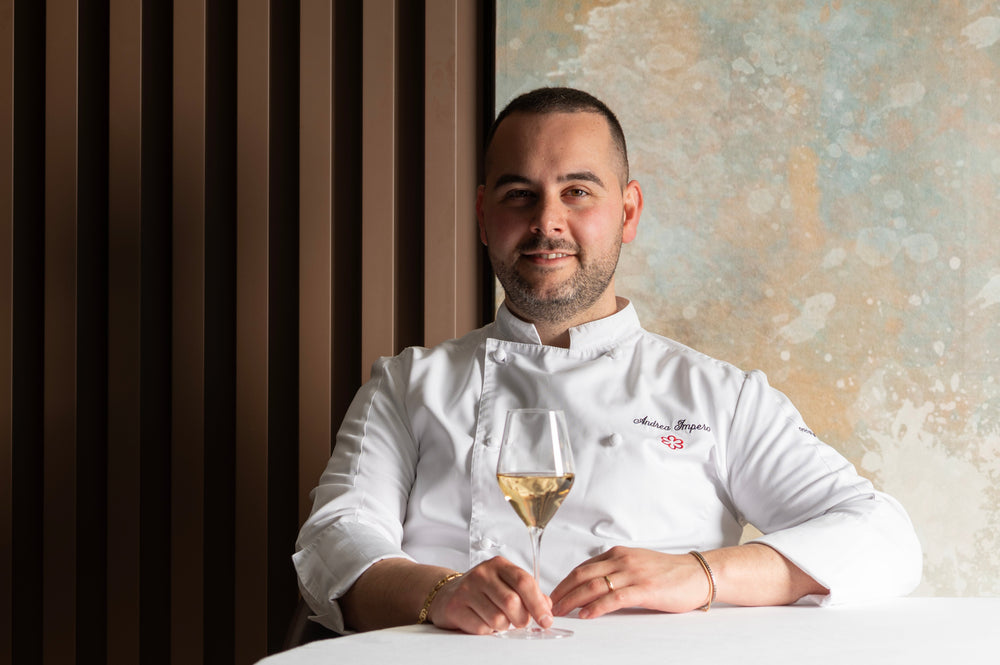From Magnum to Nebuchadnezzar, explore the list of large champagne formats and their stories, for unforgettable celebrations.
The silhouette of a champagne bottle takes on many forms. While the classic format remains by far the most well-known, it's not the only one available for sale. While some of them are the mostly used by professionals (or very knowledgeable amateurs), it's not uninteresting to present them as a whole. Whether for a festive event or to offer a memorable gift, the imposing formats can be attractive. On the other hand, we often ignore the existence of smaller formats, intended for intimate tastings.
The name of champagne bottles according to their capacity

From a few centilitres to several litres, the variety of formats has been modelled on the multiplicity of uses. Here are the names of the different bottles, listed in ascending order of size, as well as their capacities.
Many format are available on Maison Nicolas Feuillatte webshop: Quarter bottle , Half , Classic bottle, Magnum and Jeroboam . This range allows you to adapt your purchase to the type of event, from the most confidential to group events.
The origin of the names of large format bottles

The larger bottle sizes have biblical-sounding names. This uniqueness underscores the importance of wine in our cultural heritage.
- Jeroboam (3 liters)
Jeroboam takes its name from two kings of Israel who reigned around 1000 years before Jesus Christ. Jeroboam I is present in the Bible, in the First Book of Kings. He is neither more nor less than the founder of the Kingdom of Israel, of which he was the first sovereign. - Rehoboam (4.5 liters)
This name is related to that of Rehoboam (or Rehabam), the son of King Solomon, whose reign caused the schism of the northern tribes and then the creation of the Kingdom of Israel. While he too is present in the Bible, his story is not as well documented as that of his father. - Methuselah (6 liters)
Methuselah is also present in the Old Testament. This patriarch was famous for his longevity. He is thus the oldest character mentioned in this book. - Salmanazar (9 liters)
Shalmaneser V gave his name to this bottle size. King of Assyria but also of Babylon, he lived several centuries BC. The reign of this sovereign was relatively short (5 years) and unfortunately little known. - Balthazar (12 liters)
One of the most famous names given to a bottle, although there is some doubt about its origin.
For some, Balthazar is none other than one of the three wise men who came to Bethlehem for the birth of Christ. A Babylonian prince, he is famous, among other things, for having ebony skin, a rare thing in historical representations of the time. For others, the Balthazar who gave his name to this format is rather the last king of Babylon, famous for his propensity to appreciate large banquets (and therefore good wine). - Nebuchadnezzar (15 liters)
This bottle format is named after Nebuchadnezzar II, King of the Neo-Babylonian Empire. This historical figure notably inspired Verdi's famous opera "Nabucco," in which he is portrayed as a violent and tyrannical ruler. - Salomon (18 liters)
This name, of course, refers to the famous king of Israel. Son of King David, he is known in particular for having built the Temple in Jerusalem. He appears in many stories, both legendary and based on historical facts. - Melchizedek (30 liters)
To name the largest champagne bottle size, a King of Salem was chosen. His name literally means "King of Justice," but his background remains unclear and tinged with mystery, conducive to unverifiable rumors.



